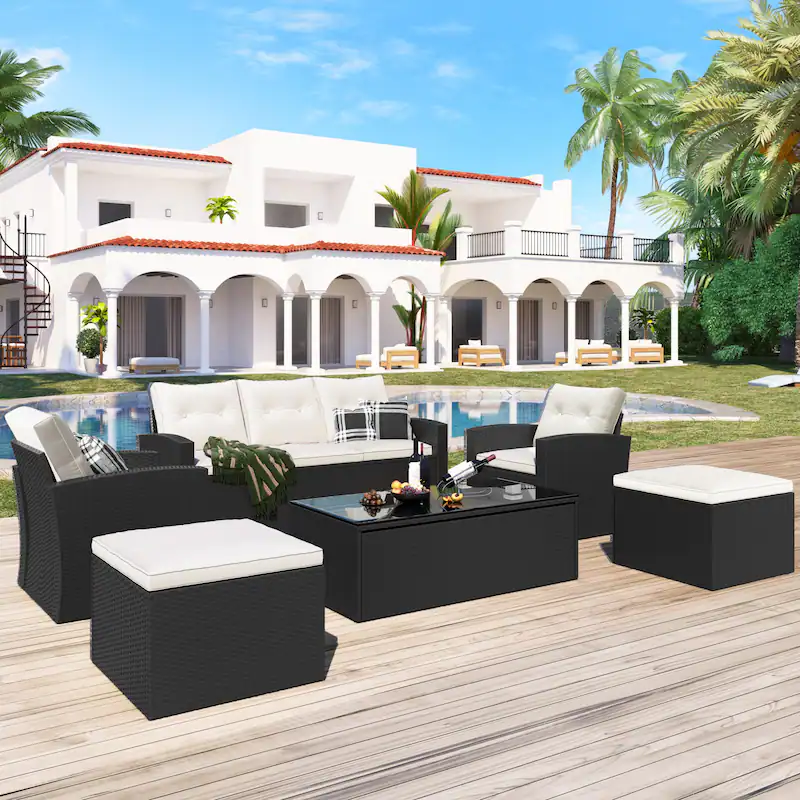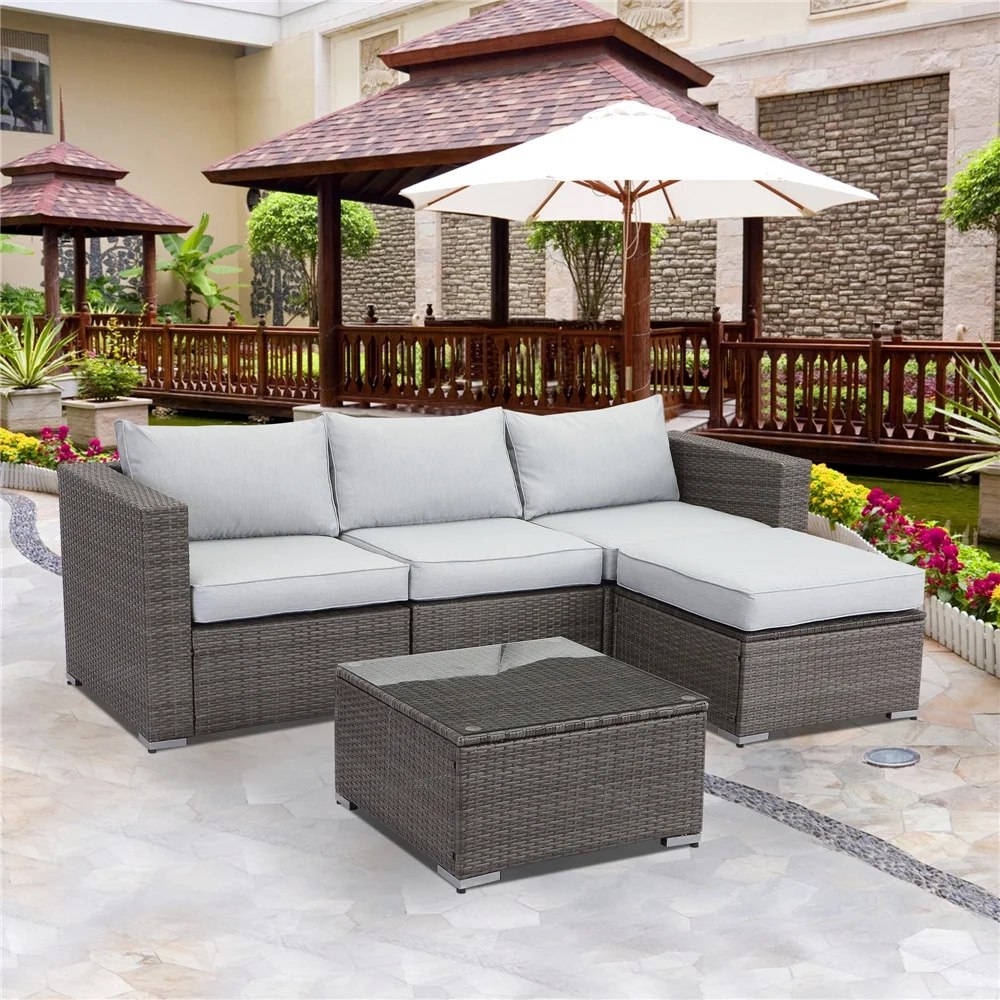Rattan furniture has become a popular choice for courtyards, terraces and gardens with its unique natural beauty and comfort. However, what are the advantages and disadvantages of rattan furniture? This article will analyze in depth from multiple angles to give you a comprehensive analysis of the performance of rattan furniture in outdoor use.
History and development of rattan furniture
Rattan furniture originated from tropical and subtropical regions. Because of its lightness, toughness and good elasticity, it has become a common material for furniture manufacturing hundreds of years ago. With the development of the times, rattan furniture has gradually entered the public's field of vision, and because of its unique texture and environmental protection characteristics, it has occupied a place in modern home design.
In recent years, with the advancement of science and technology, the emergence of synthetic rattan furniture has further broadened the application scope of rattan furniture. Synthetic rattan not only retains the appearance and feel of natural rattan, but also has stronger weather resistance and service life, and has gradually become the mainstream choice in the outdoor furniture market.

What are the advantages of rattan furniture?
1. Natural beauty
Qutdoor rattan furniture, with its natural texture and warm tones, gives outdoor spaces a unique natural beauty. The weaving process of rattan adds a handmade exquisiteness and uniqueness to the furniture, which can be well integrated into various courtyard, terrace and garden designs to create a comfortable and warm atmosphere.
2. Lightweight and portable
Rattan is light, and the furniture made of it is not only easy to carry and place, but also can be flexibly adjusted. Compared with metal or solid wood furniture, rattan furniture is lighter and very suitable for outdoor environments that need to be adjusted frequently.
3. Environmentally friendly and healthy
Natural rattan is taken from nature and is a renewable resource, which is in line with modern people's pursuit of environmental protection and sustainable development. Although synthetic rattan is an artificial material, many brands have also begun to use environmentally friendly polymers to reduce the impact on the environment.
4. Ventilation and breathability
The woven structure of rattan furniture makes it have good ventilation and breathability, especially suitable for summer use. In hot weather, sitting on rattan furniture will not feel stuffy, and it can provide a cool place to rest.
5. Diverse designs
The flexibility and plasticity of rattan give it great flexibility in design. Whether it is a traditional hand-woven chair or a modern minimalist sofa, rattan furniture can show a rich variety of styles to meet different aesthetic needs.

What are the disadvantages of rattan furniture?
1. Poor weather resistance
Natural rattan has poor adaptability to the environment. Long-term exposure to sunlight will cause fading and brittleness, and it is prone to mold and rot in a humid environment. Although synthetic rattan has improved weather resistance, its service life will still be affected if it is not properly protected and maintained.
2. High maintenance cost
Rattan furniture needs to be cleaned and maintained regularly to prevent dust, mold and insect infestation. In particular, natural rattan, in addition to daily cleaning, also requires special protective treatment, such as applying mildew and insect repellent. These maintenance work increases the cost of use and time investment.
3. Limited comfort
Although rattan furniture has good ventilation and breathability, it has a high hardness and may feel uncomfortable when sitting or lying for a long time. In order to improve comfort, it is usually necessary to equip it with additional cushions and backrests, which also increases the complexity of use and maintenance.
4. Easy to deform
Although rattan has good elasticity, it is easy to deform under long-term use and heavy pressure, affecting the appearance and use experience. Especially in high temperature and high humidity environments, the deformation problem of rattan is more obvious and needs special attention.
Market feedback and user experience
In order to have a more comprehensive understanding of the advantages and disadvantages of rattan furniture, we interviewed many consumers and analyzed market survey data.
Ms. Li, who is quite experienced in garden layout, said: "Rattan furniture is indeed very beautiful and very harmonious in the garden. However, it is indeed a bit troublesome to maintain, especially in summer, it needs to be cleaned frequently, otherwise it is easy to mold."
According to a report from a well-known market research organization, more than 50% of the respondents are satisfied with the natural beauty of rattan furniture, but 40% of the respondents mentioned its weather resistance and high maintenance cost. The user satisfaction of synthetic rattan furniture is relatively high, especially in terms of durability and easy maintenance.
Conclusion
Rattan furniture has become an important part of the outdoor furniture market with its unique natural beauty and comfort. Its advantages include natural beauty, lightness and portability, environmental health, and ventilation and breathability, but it also has certain shortcomings in weather resistance, maintenance cost, comfort, and deformation.

